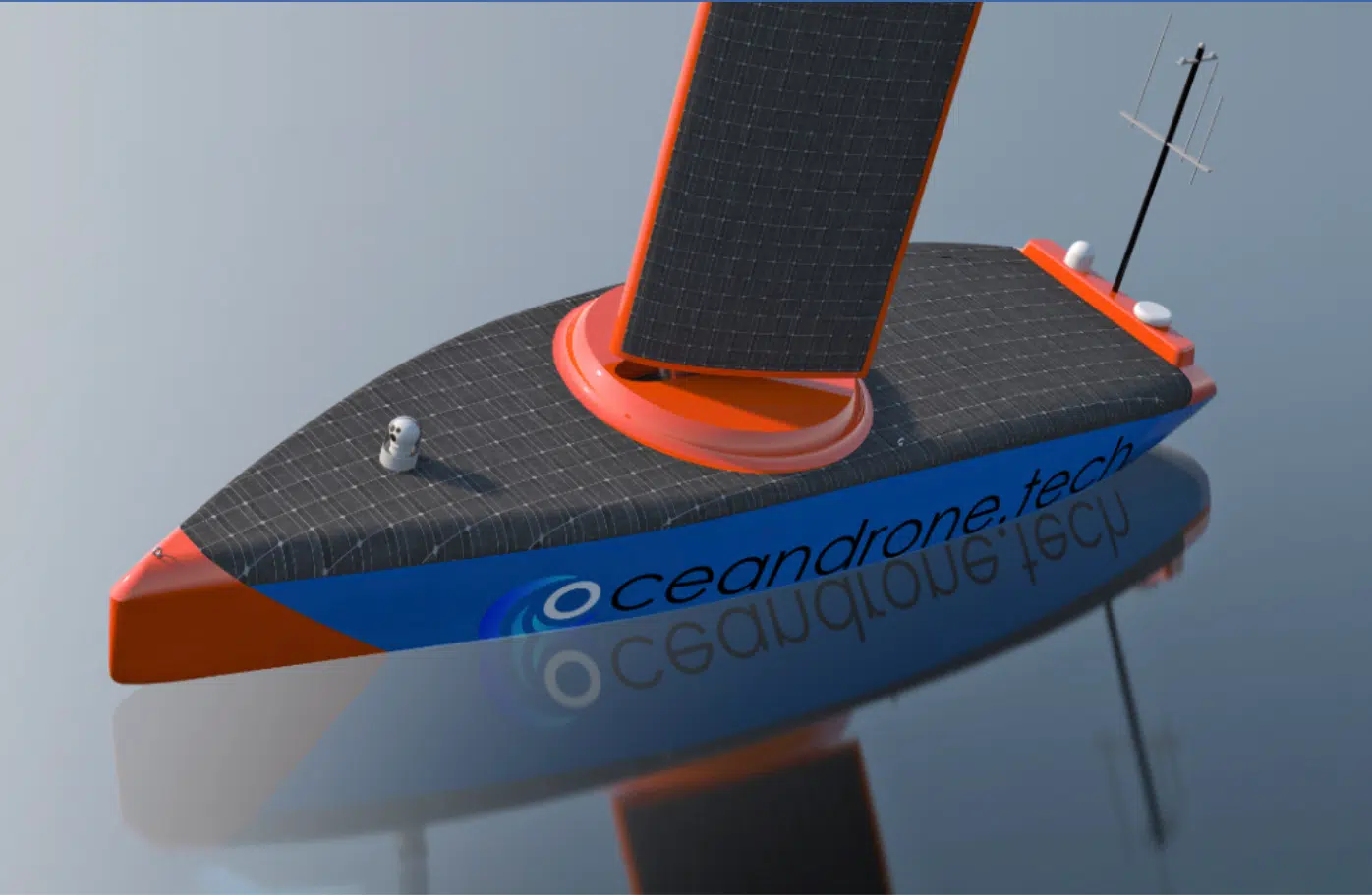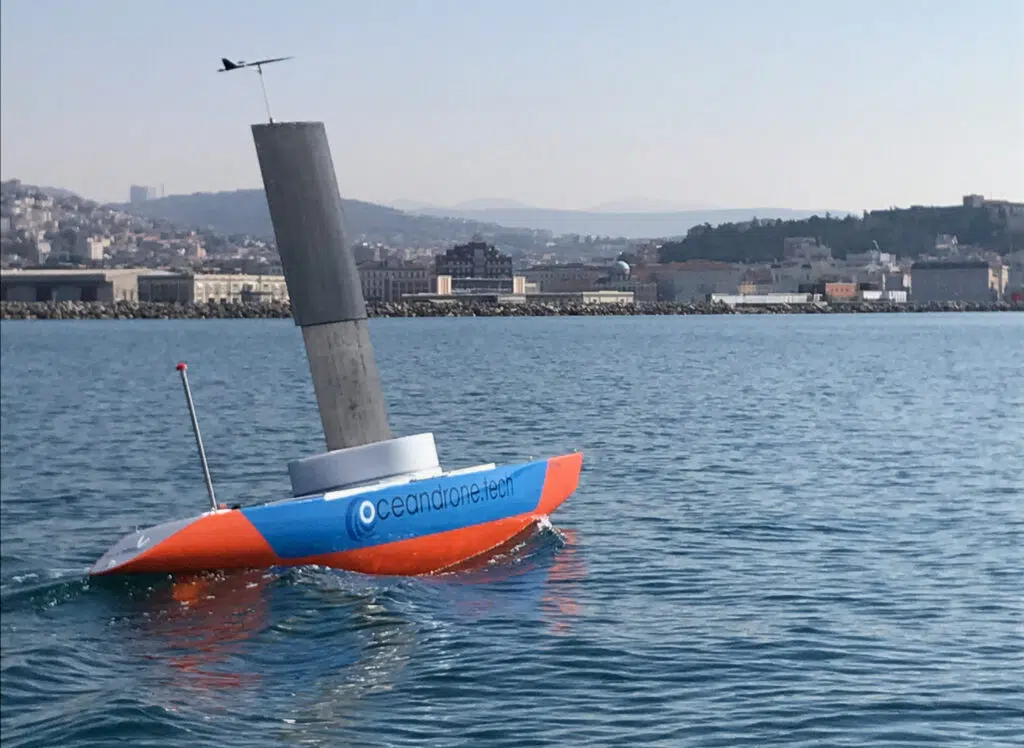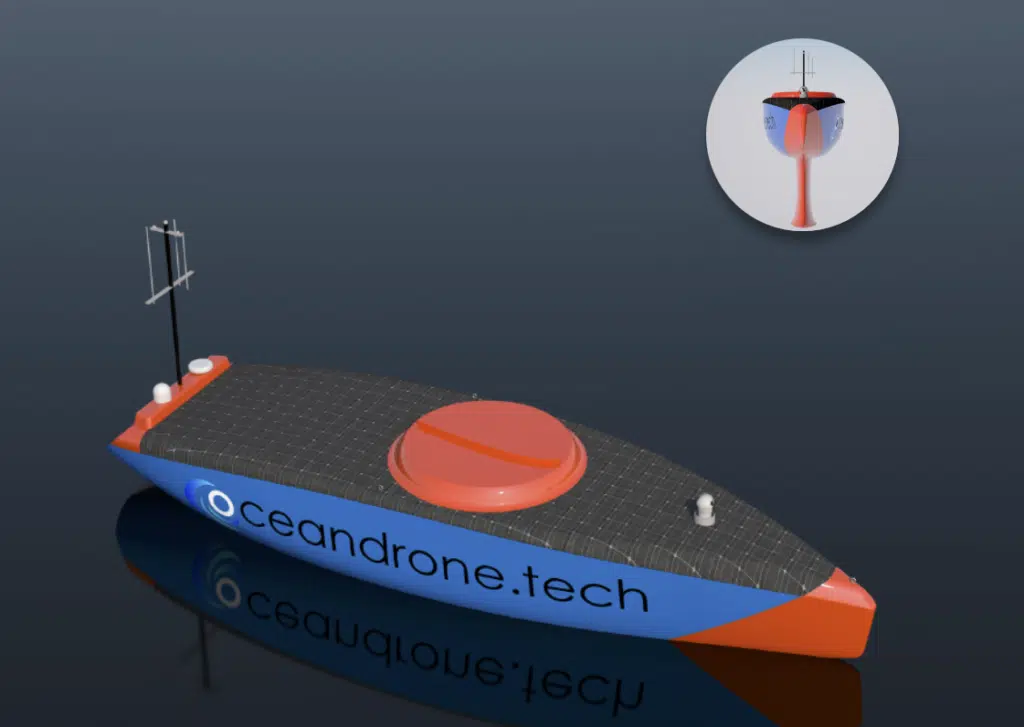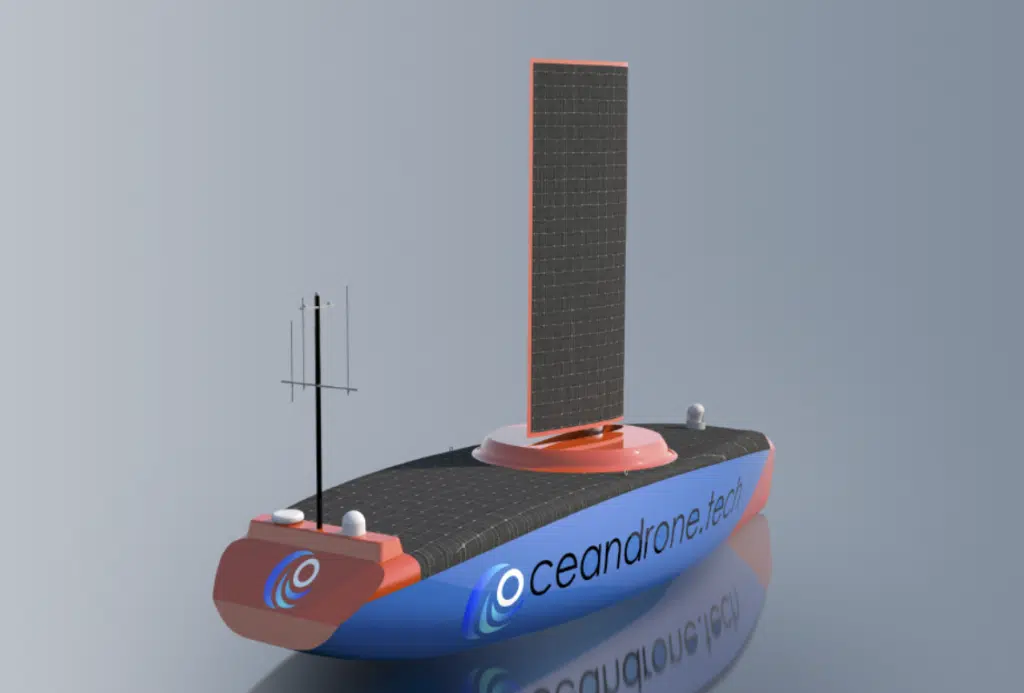
Oceandrone: an autonomous eco-robotic wind and solar powered sailing craft
The first test of the Oceandrone prototype, project of an Eco robotic Uncrewed Surface Vessel by XUNORD, an Innovo company, took place in these days, for wich Cossutti Yacht Design is following the development of naval architecture, hull structure and sail plan. The sea trials were conducted in the Gulf of Trieste with the assistance of Società Triestina della Vela who provided all the logistical support to the team.
Oceandrone is an autonomous eco-robotic wind and solar powered sailing craft, designed to operate in extreme weather conditions. This product is the result of Innovo’s team decades of experience in underwater robotics, and the technical advancements made in America’s Cup racing sails. As part of the energy supply chain, the Oceandrone team is committed to gearing its design, construction and working processes to support the global energy transition from fossil-based fuel to renewable energy sources.
It may seem an unlikely link, but advances in racing sails have given a team of marine robotics experts at Innovo inspiration in their quest to help reduce carbon emissions from some vital energy industry activities. The Innovo group’s goal is to create a family of autonomous surface vessels from 6 to 32 meters for oceanographic use, surveillance and rescue.
.
The first tests, with very exciting results, of the 1:2 scale Ocendrone prototype took place in these days; the sea trials were conducted in the Gulf of Trieste with the assistance of Triestina della Vela, historic local sailing club that celebrates its 100th anniversary this year, who provided all the logistical support to the team.
.

The first prototype sailing in Trieste
.
The key to successful innovation in low margin, high risk sectors like oil and gas and renewables lies is combining new thinking with reliable technology. Oceandrone has automated systems enabling it to sail on a programmed route, track the AUV, transfer data and self-hibernate during rough conditions. In self-hibernation mode its innovative patent-pending ‘pocket keel’ sail, retracts into the keel for protection meaning that, unlike other autonomous vessels, the Oceandrone can avoid the kind of damage that could otherwise suspend tasks or require intervention. The deck is designed to be free of equipment to make way for solar cells used to charge batteries to operate the propellor and for control and other systems including sonar, imaging, radar, Intelligence Surveillance & Reconnaissance (ISR), environmental sensors and data loggers payloads. Innovation is found in the propulsion system too. It allows optimal use of wind and/or solar energy. That, coupled with the fact that there is no crew, means that the Oceandrone can spend virtually limitless time at sea without maintenance.
.
Main Applications
Targeting the Oceanology, Data Collection, Fisheries and Security sectors, Oceandrone can operate autonomously or be controlled remotely in all sea conditions
– Surface tracking drone to support
– Autonomous Underwater Vehicle (AUV)
– Autonomous drone for survey / met-ocean activities Autonomous surveillance and reconnaissance
Features
– Propulsion: sailing and fuel cells powered by solar energy and hydro generators
– Using our patent pending ‘pocket keel’ innovation, the sail can be retracted (partially or totally) inside the keel when not in use. This completely sheltered system prevents damage to the sail even if the vessel capsizes
– Deck area free of equipment to allow for the installation of: solar cells which will charge the batteries to operate the propeller and control systems; bespoke package of communication and surveillance devices
– Can be operated remotely
Benefits
– Offers autonomous operations in all sea conditions 24-hours a day, 7-days a week, 365-days a year
– Reduces the need for an AUV support vessel making a significant contribution to achieving net-zero carbon dioxide (CO₂) emissions
– Reduces the probability of workers encountering danger when measuring hazardous areas and complex routes
– Saves labour and fuel costs
Resources:
Cossutti Yacht Design Website: www.cossutti.it
Official Oceandrone Website: www.oceandrone.tech
Innovo Website: www.innovoteam.com


